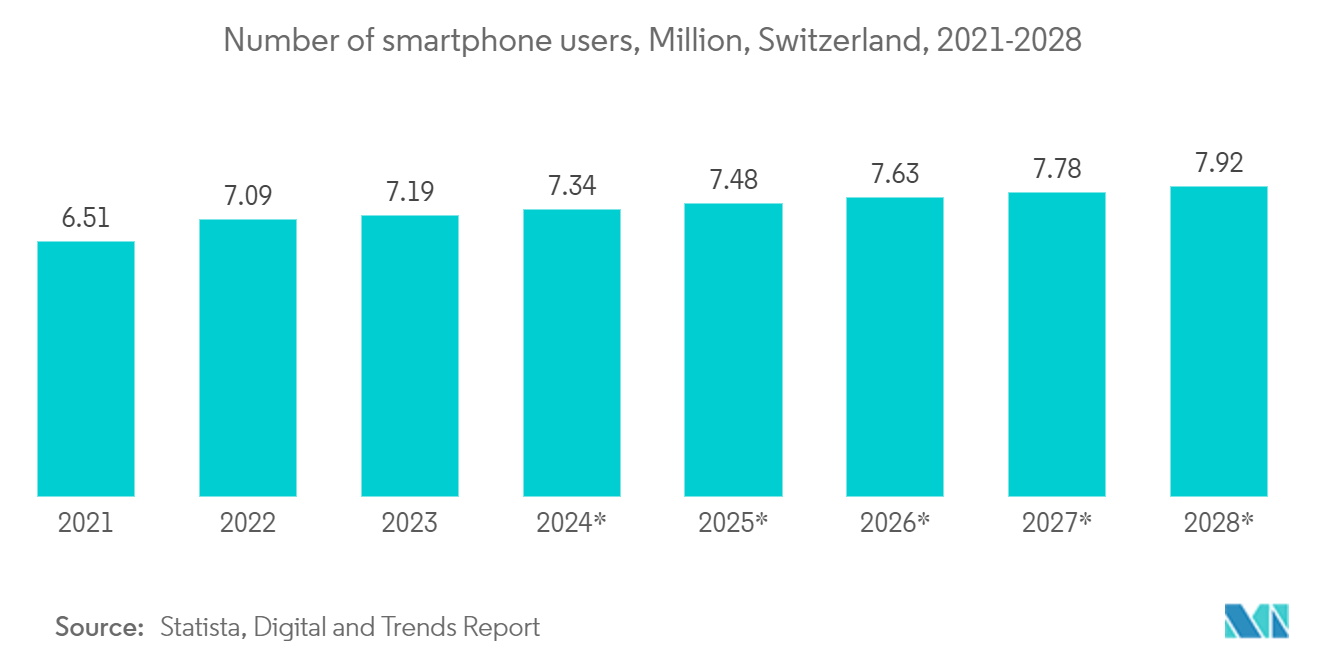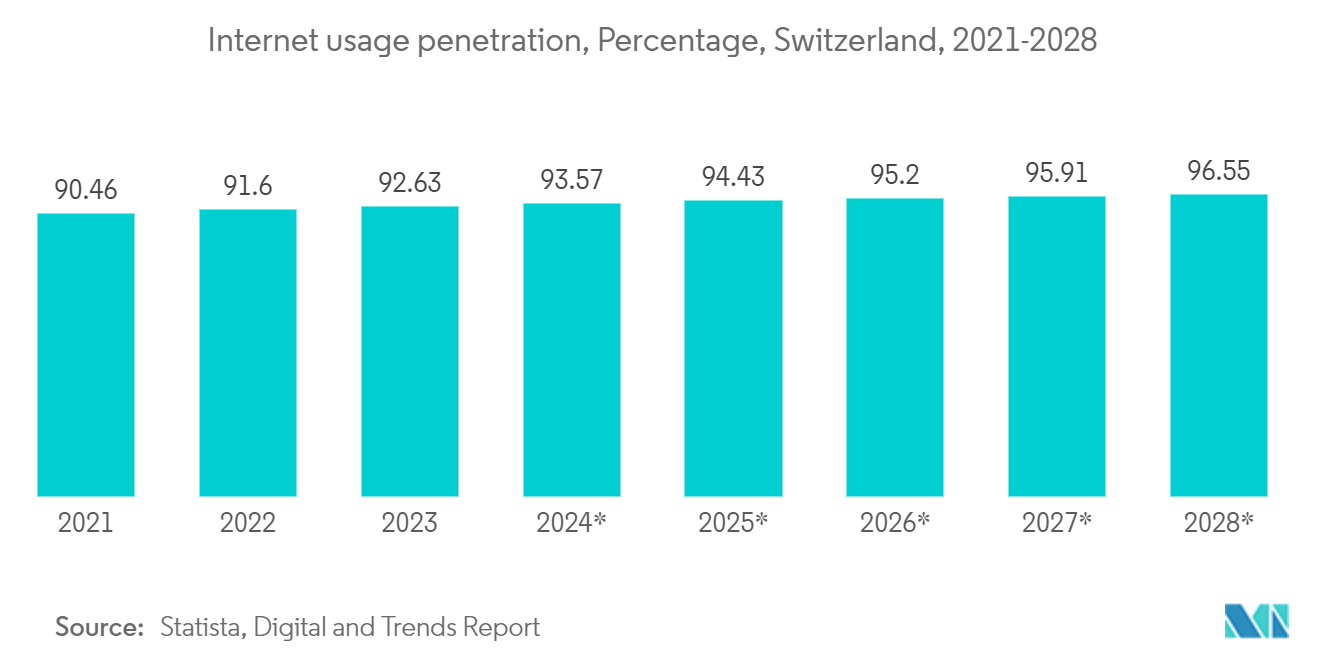Market Trends of Switzerland Data Center Networking Industry
IT & Telecommunication Segment to Hold Major Share in the Market
- The growth in this sector is primarily fueled by the surge in telecom subscribers and the rising number of smartphone users, which in turn generate an abundance of data. This increased data consumption is driving the demand for data center network solutions in the country.
- Social media users in Switzerland reached 7.54 million, with a 6.2% growth, adding 440 thousand users between 2021 and 2022. These trends are indicative of the mounting data traffic, as people spend more time on their smartphones and digitalization continues to expand across various user segments. Consequently, the need for data center solutions is on the rise to accommodate this increased demand.
- Furthermore, the increasing demand for 4G services and the ongoing expansion of infrastructure to support 5G services are further propelling the usage of data centers. As data generation keeps surging, so does the requirement for robust backup and storage solutions, which align with the growing number of network solutions within data centers.
- The burgeoning adoption of AI, IoT, and big data workloads is also a driving force behind the demand for advanced data center network infrastructure solutions. This trend empowers providers to continuously enhance their network portfolios, ensuring adaptability to the evolving environment while delivering enhanced efficiency, scalability, and reliability.
- In addition to these factors, the substantial growth of mega data centers, the high penetration of 100GB switch ports, the ongoing development of broadband, the increasing demand for high-speed internet, and the expansion of internet infrastructure are all contributing positively to the overall market growth.

Ethernet Switches to Hold Significant Share in the Market
- Ethernet technology serves as a versatile and efficient solution for addressing the escalating connectivity demands within data centers, driving the need for high-bandwidth switches.
- This growth is primarily attributed to its operational flexibility, ranging from 10 Mbit/s to 400 Gbit/s. For instance, residential high-speed Internet services currently offer speeds of approximately 60 Mbps for copper-based connections, while fiber-optic services can deliver near-gigabit ethernet speeds. This has resulted in a sharp uptick in the demand for ethernet technology, further fueling the adoption of ethernet switches.
- The utilization of ethernet switches is anticipated to surge due to the widespread integration of power over ethernet (PoE) across various applications, the expanding scope of internet connectivity, the evolution of cloud networks, and the integration of home and business networks.
- Moreover, the increased investments in the IT sector, the ongoing digital transformation, and the expansion initiatives undertaken by numerous enterprises, including those in telecommunications, data centers, and cloud computing, are propelling the use of ethernet switches in the country.
- Ethernet switches are employed across a diverse range of applications in industrial infrastructure, such as smart grids, surveillance and security systems, smart rail and transportation networks, and various utilities. These switches play a pivotal role in substation automation within smart grids by simplifying the cabling intricacies and reducing tension between power transmission and distribution devices within a substation.


